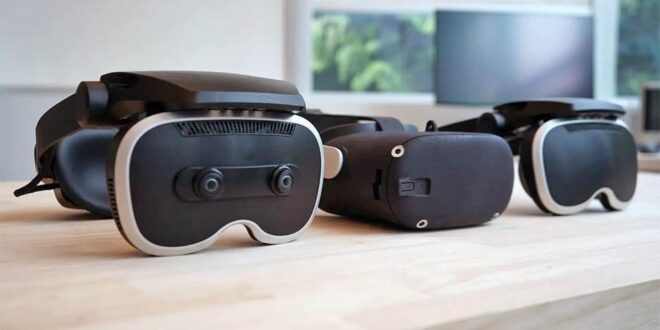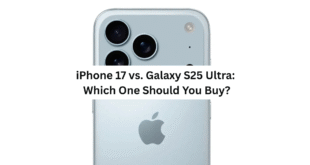At Meta Connect 2025, one of the biggest spotlights was on the Meta Quest 4—Meta’s latest step forward in virtual and mixed reality. The headset promises more power, a sleeker look, and a real attempt at making VR useful beyond gaming. But does it live up to the hype, and more importantly, how does it compare to rivals like Apple Vision Pro and HTC Vive XR Elite?
Let’s break it down.
🔧 Meta Quest 4 Features & Specs
Meta didn’t reinvent the wheel, but the Quest 4 packs meaningful upgrades:
- Processor: Powered by the new Snapdragon XR3 chip, delivering smoother performance and faster load times.
- Display: Sharper resolution with improved refresh rates, designed to reduce motion sickness.
- Design: Slimmer and lighter than the Quest 3, making longer sessions more comfortable.
- Mixed Reality: Enhanced passthrough cameras with color depth and lower latency, letting users switch between real and virtual worlds more naturally.
- Battery Life: Slightly improved over the Quest 3, though still not all-day wear.
- Controllers & Tracking: Refined hand-tracking and upgraded controllers for more precise movement.
🎮 What You Can Actually Do With It
- Gaming: As expected, Quest 4 supports the latest VR titles with better performance.
- Fitness: Meta is leaning into fitness apps, hoping to make VR part of your daily routine.
- Productivity: New features aim at collaboration—think VR meetings with AI-powered avatars.
- Social: Integration with Horizon Worlds, now available cross-platform, means social VR is central to the experience.
⚖️ How Quest 4 Stacks Up Against Competitors
Quest 4 vs Apple Vision Pro
- Price: Quest 4 is significantly cheaper. Apple’s Vision Pro remains a premium device.
- Use Case: Quest is positioned for everyday entertainment and social experiences; Vision Pro leans more toward productivity and luxury.
- Design: Apple’s headset has superior display quality, but the Quest 4 wins on portability and comfort.
Quest 4 vs HTC Vive XR Elite
- Price: Quest 4 is again the more affordable option.
- Ecosystem: Vive XR Elite is strong for enterprise and high-end PC VR setups, while Quest 4 benefits from Meta’s ecosystem and standalone performance.
- Mixed Reality: Both are pushing MR, but Quest’s improved passthrough may appeal more to casual users.
Quest 4 vs PlayStation VR2
- Platform Lock-In: PS VR2 is tethered to the PlayStation 5, while Quest 4 is standalone.
- Content: Sony has strong exclusives in gaming, but Quest wins in versatility (fitness, productivity, social).
🌍 Why Quest 4 Matters
The Quest 4 isn’t about flashy specs alone—it’s about making VR and MR feel like something you could use daily, not just on weekends. It’s clear Meta wants to bridge the gap between gaming and “life tools,” nudging VR closer to being as common as a tablet or laptop.
For the price, Quest 4 may be the most accessible entry point into the next era of immersive tech. Competitors might outshine it in display quality or premium design, but Meta’s strategy is volume and accessibility—and it might just work.
👉 Bottom line: The Quest 4 isn’t perfect, but it’s Meta’s strongest attempt yet to make VR mainstream. If you’re curious about mixed reality without spending Apple-level money, this headset is hard to ignore.
 UBUCH ubuch | Honest Tech Reviews & Tutorials for Everyone
UBUCH ubuch | Honest Tech Reviews & Tutorials for Everyone


